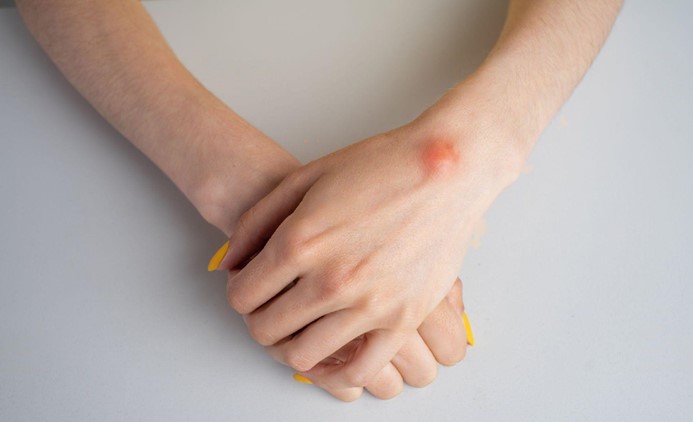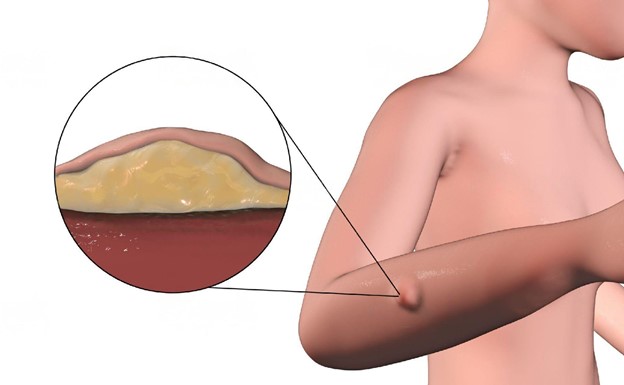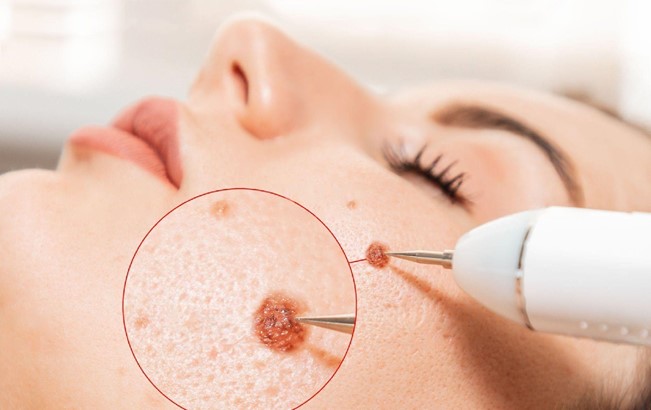
You may have heard of lipomas and moles before, but do you know what they are, how they come about, or how they can be gotten rid of?
A lipoma is the growth of fat cells in the subcutaneous layer of skin. They are usually soft and rubbery to the touch and can vary in size. Moles, on the other hand, are growths on the skin that can be either cancerous or benign.
Both lipomas and moles are harmless growths; however, they can sometimes be unsightly.
In this blog post, we’ll discuss everything you need to know about lipomas and moles: cause, removal, and prevention.
What causes lipomas and moles?
It is important to be aware of the various factors associated with the cause of lipomas and moles.
Knowing this, you can take any necessary precautions to prevent them from forming in the first place.
And if they do occur, knowing how to properly care for them will help ensure that they remain small and manageable over time.
The factors that cause lipomas and moles?
Several different factors can contribute to the development of lipomas and moles.
- Excessive levels of certain hormones in the body, such as growth hormone or estrogen, can make people more susceptible to these types of growth.
- Factors like age, ethnicity, medical history, stress levels, diet habits, and environmental exposure can all play a role in whether or not someone develops one of these growths.
- Furthermore, certain genetic predispositions have been linked to an increased likelihood of developing moles or lipomas.
What are the symptoms of lipomas and moles ?

On the other hand, lipomas are round or oval lumps that are soft and doughy to the touch. The most common symptom of a lipoma is a bump or mass beneath the skin, which may be tender or frictionless when touched.
Additionally, lipomas usually range from one to several centimeters in size, while moles can vary dramatically in size, from just a few millimeters up to several centimeters in diameter.
Other signs of lipomas may include pain and swelling around the tumor, along with difficulty moving due to increased pressure on surrounding tissue.
Consequently, these differences can help determine whether a particular growth is a harmless lipoma or an ominous-looking mole that may require further medical attention.
Yes. This is because, in addition to these physical symptoms, both moles and lipomas can be diagnosed.
How are lipomas and moles diagnosed ?
The diagnosis of a lipoma or mole is usually based on visual inspection. Typically, these types of growth are discovered when the individual examines their skin for some other reason, such as for changes caused by aging.
For a mole, an examination by a healthcare professional may be necessary if further evaluation is required.
In general, both diagnoses are relatively straightforward and are usually made based on the size and shape of the growth.
However, some medical tests may be required in certain cases, such as tissue samples or genetic testing to rule out more serious conditions such as cancer.
Carrying out a diagnosis can help to determine the underlying cause and guide any necessary treatment plan going forward.
The risk associated with lipoma & mole
There is no single answer to this question when asked about the risks associated with lipoma or moles.
The prognosis would depend on several different factors.
Generally speaking, moles can be harmless, and many people simply leave them alone without requiring any treatment. In some cases, these benign tumors can become inflamed or infected.
In more severe situations, moles may become cancerous or develop into dangerous skin growths called melanomas.
If you suspect that you have a mole that might be problematic, it is best to consult a healthcare professional who can perform a thorough examination and determine what steps should be taken next.
For most people with moles or lipomas, however, the prognosis is generally positive and they will not experience any further complications in the future.
Removing lipomas & moles
There are a variety of treatments for lipomas and moles, but one of the most common is complete removal. This can be done through a surgical procedure that is quick and typically doesn’t require a lot of downtime afterward. It can be performed by an experienced plastic surgeon.
Removing lipomas & moles

The lipoma and mole removal surgery is a minimally invasive outpatient procedure that takes less than an hour to complete.
- First, a small incision is made in the skin over the growth.
- Next, the lipoma or mole is carefully removed along with a margin of healthy tissue around it.
- The wound is then closed with stitches or surgical tape and a bandage is applied.
The entire process takes about 45 minutes to an hour and most people can return home the same day.
This process is the simplest and most common form of mole and lipoma removal. However, there are various types of surgery that can be carried out:
What are the different types of surgery for lipomas and moles?
There are several different types of surgery that can be used to treat lipomas and moles:
- Excision procedure:
The most common type of treatment is the surgical excision that we mentioned above. The surgeon cuts away the lump along with a small amount of healthy tissue.
- Laser removal:
It makes use of laser light to destroy unwanted tissue; - Cryosurgery
Cryosurgery often involves the use of freezing temperatures to stop the growth of any remaining cells;
The choice of procedure, just like treatment, will depend on many factors, including the size and location of the lump as well as your overall health and medical history.
So if you are dealing with a persistent concern about lipomas or moles, it is important to work closely with your doctor to explore these treatment options.
What is the recovery time after surgery ?
Most patients will experience a quick and painless recovery after having their moles or lipomas removed through surgery.
But some people might experience mild bruising or swelling around the affected area. This is to be expected but it should also subside within a few days.
In terms of long-term care after surgery, it is important to protect the wound from exposure to the sun for at least a few weeks. This can be done by covering the area with clothing or applying sunscreen over it regularly until the skin fully heals.
Are there any risks associated with surgery ?
While this type of procedure does carry some risks, these risks tend to be relatively minor. For example, the most common risk is scarring, which can cause changes in skin color or texture.
However, there are ways to minimize the risk of scarring, including careful wound care and using compression garments after surgery.
Additionally, some patients may experience pain or bruising after the procedure, and there is always a small chance that healthy tissue could be affected during the removal process.
Ultimately, while lipomas and mole surgery involve some level of risk, these risks are typically manageable -and avoidable -when you work with an experienced surgeon.
Can lipomas and moles be prevented ?
Unfortunately, there is no surefire way to prevent lipomas or moles from forming.
However, you can help reduce your chances by using sunscreen when you go outside, avoiding sun exposure during peak hours (10 am-2 pm), wearing protective clothing when outdoors, and avoiding tanning beds altogether.
If you’d like to have a lipoma or mole removed, please consult with an experienced plastic surgeon in Singapore.
While there is no surefire way to prevent these growths from occurring, you can help reduce your chances by taking steps to protect your skin from sun damage.